-
 Bitcoin
Bitcoin $117300
1.93% -
 Ethereum
Ethereum $3866
5.21% -
 XRP
XRP $3.109
3.81% -
 Tether USDt
Tether USDt $1.000
0.01% -
 BNB
BNB $781.5
1.52% -
 Solana
Solana $173.0
2.95% -
 USDC
USDC $0.9998
0.00% -
 Dogecoin
Dogecoin $0.2181
6.31% -
 TRON
TRON $0.3403
0.93% -
 Cardano
Cardano $0.7683
3.91% -
 Hyperliquid
Hyperliquid $40.08
5.09% -
 Sui
Sui $3.742
7.38% -
 Stellar
Stellar $0.4152
4.69% -
 Chainlink
Chainlink $18.40
10.03% -
 Bitcoin Cash
Bitcoin Cash $580.6
2.21% -
 Hedera
Hedera $0.2543
4.25% -
 Ethena USDe
Ethena USDe $1.001
-0.01% -
 Avalanche
Avalanche $22.94
3.52% -
 Litecoin
Litecoin $121.8
2.24% -
 UNUS SED LEO
UNUS SED LEO $8.955
-0.41% -
 Toncoin
Toncoin $3.330
3.03% -
 Shiba Inu
Shiba Inu $0.00001270
2.97% -
 Uniswap
Uniswap $10.34
6.42% -
 Polkadot
Polkadot $3.805
3.86% -
 Dai
Dai $1.000
0.01% -
 Bitget Token
Bitget Token $4.429
1.80% -
 Cronos
Cronos $0.1495
4.65% -
 Monero
Monero $255.6
-9.08% -
 Pepe
Pepe $0.00001096
4.40% -
 Aave
Aave $282.9
7.85%
How long in advance will the margin call notice be sent?
A margin call happens when an investor's account value drops below the broker's minimum; traders must act quickly upon receiving a notice to avoid asset liquidation.
May 05, 2025 at 04:14 pm
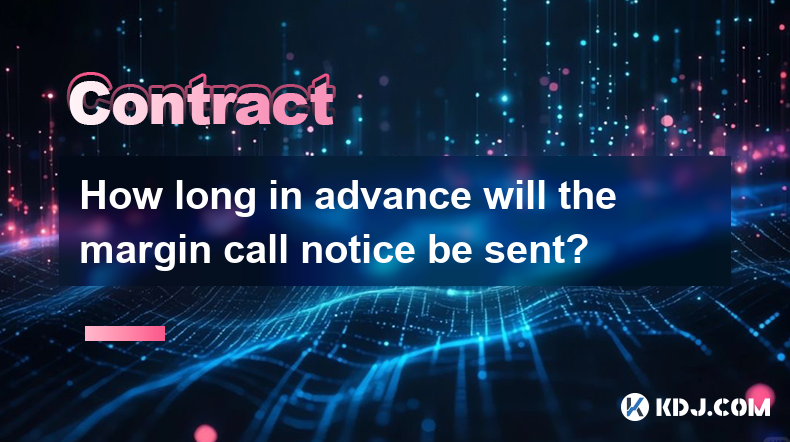
Understanding Margin Calls in Cryptocurrency Trading
In the world of cryptocurrency trading, a margin call is a critical event that traders need to be aware of. A margin call occurs when the value of an investor's margin account falls below the broker's required minimum, known as the maintenance margin. This situation requires the investor to either deposit more funds or sell some of their assets to bring the account back to the required level. One of the key concerns for traders is how much advance notice they will receive before a margin call is enforced.
The Importance of Timely Margin Call Notices
Receiving a timely margin call notice is crucial for traders to manage their positions effectively. The notice period allows traders to take necessary actions to avoid liquidation of their assets. The exact duration of the notice period can vary depending on the trading platform and the specific terms of the margin agreement. Understanding these details can help traders prepare better and mitigate potential risks.
Factors Influencing the Margin Call Notice Period
Several factors can influence how long in advance a margin call notice will be sent. These include the policies of the trading platform, the type of margin account, and the specific terms agreed upon at the time of account opening. Some platforms may offer a more generous notice period, while others might have stricter policies. It's essential for traders to review their margin agreement thoroughly to understand the exact notice period they can expect.
Typical Margin Call Notice Periods in Cryptocurrency Trading
In the cryptocurrency trading space, the typical margin call notice period can range from a few hours to a few days. For instance, some platforms might send a margin call notice 24 hours in advance, while others might provide only a 12-hour window. The variation in notice periods is often a reflection of the platform's risk management policies and the volatility of the cryptocurrency market. Traders should be aware of these differences and choose platforms that align with their trading strategies and risk tolerance.
How to Check Your Margin Call Notice Period
To find out the specific margin call notice period for your account, you can follow these steps:
- Log into your trading account: Access your trading platform using your credentials.
- Navigate to the account settings or margin settings section: This is usually found under the account management or settings tab.
- Review the margin agreement: Look for the section that outlines the margin call policy, including the notice period.
- Contact customer support if needed: If the information is not clear or you need further clarification, reach out to the platform's customer support team.
Actions to Take Upon Receiving a Margin Call Notice
Upon receiving a margin call notice, traders need to act quickly to address the situation. Here are some steps you can take:
- Assess your current position: Evaluate the value of your assets and the amount needed to meet the margin requirements.
- Deposit additional funds: If possible, add more funds to your account to meet the margin call.
- Sell assets: If adding funds is not an option, consider selling some of your assets to bring your account back to the required level.
- Review your trading strategy: Use this opportunity to reassess your trading strategy and risk management practices to avoid future margin calls.
Strategies to Avoid Margin Calls
To minimize the risk of receiving a margin call, traders can adopt several strategies. These include:
- Maintaining a buffer: Keep a buffer of funds in your account above the minimum margin requirement to account for market fluctuations.
- Using stop-loss orders: Implement stop-loss orders to limit potential losses and protect your margin account.
- Diversifying your portfolio: Spread your investments across different assets to reduce the risk of a significant drop in value affecting your entire portfolio.
- Regularly monitoring your account: Keep a close eye on your account balance and market conditions to anticipate potential margin calls.
Frequently Asked Questions
Q: Can the margin call notice period change after account opening?
A: Yes, the margin call notice period can change if the trading platform updates its policies or if you switch to a different type of margin account. It's important to stay informed about any changes by regularly reviewing your account terms and conditions.
Q: What happens if I ignore a margin call notice?
A: Ignoring a margin call notice can lead to the forced liquidation of your assets by the trading platform to cover the margin deficit. This can result in significant losses and potentially close your positions at unfavorable prices.
Q: Are there any fees associated with margin calls?
A: Some trading platforms may charge fees for margin calls, especially if they need to liquidate your assets. These fees can vary, so it's crucial to understand the fee structure of your trading platform.
Q: Can I negotiate the margin call notice period with my trading platform?
A: While it's rare, some platforms might be open to negotiating the margin call notice period, especially for high-value accounts or long-term clients. However, this is not common, and traders should not rely on this possibility.
Disclaimer:info@kdj.com
The information provided is not trading advice. kdj.com does not assume any responsibility for any investments made based on the information provided in this article. Cryptocurrencies are highly volatile and it is highly recommended that you invest with caution after thorough research!
If you believe that the content used on this website infringes your copyright, please contact us immediately (info@kdj.com) and we will delete it promptly.
- Bitcoin Reserve, Gold Revaluation, Congress Considers: A New Era for US Financial Strategy?
- 2025-08-08 04:30:12
- KAITO's Momentum: Can It Reclaim Support Amidst Social Media Scrutiny?
- 2025-08-08 04:30:12
- Pi Coin's dApp and AI Potential: Building a Decentralized Future
- 2025-08-08 02:30:12
- Ruvi AI Takes the Lead: Outshining Dogecoin on CoinMarketCap
- 2025-08-08 02:50:12
- Cryptos Under $1: Is Ripple Still the King?
- 2025-08-08 03:50:12
- Cold Wallet, Bonk Price, ICP Price: Navigating the Crypto Landscape in 2025
- 2025-08-08 03:56:12
Related knowledge
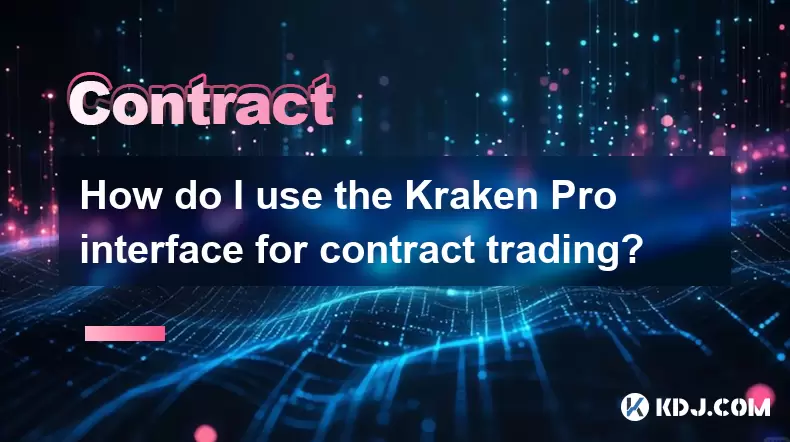
How do I use the Kraken Pro interface for contract trading?
Aug 08,2025 at 05:00am
Understanding the Kraken Pro Interface for Contract TradingThe Kraken Pro platform is designed for advanced traders who require speed, precision, and ...
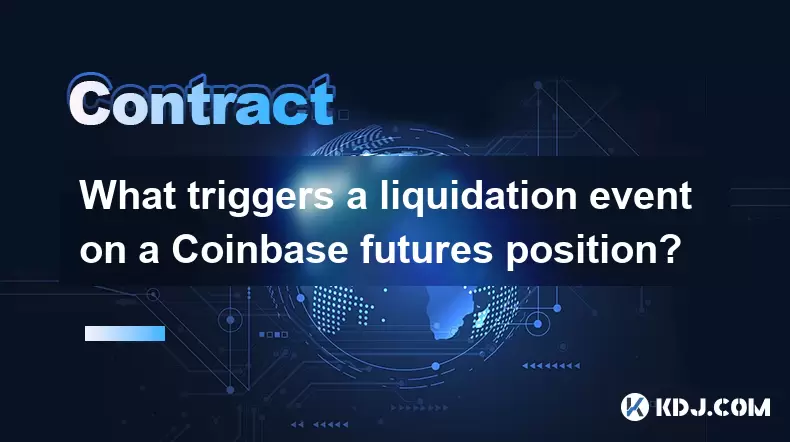
What triggers a liquidation event on a Coinbase futures position?
Aug 08,2025 at 01:15am
Understanding Futures Contracts on CoinbaseFutures contracts on Coinbase allow traders to speculate on the future price of a cryptocurrency, such as B...
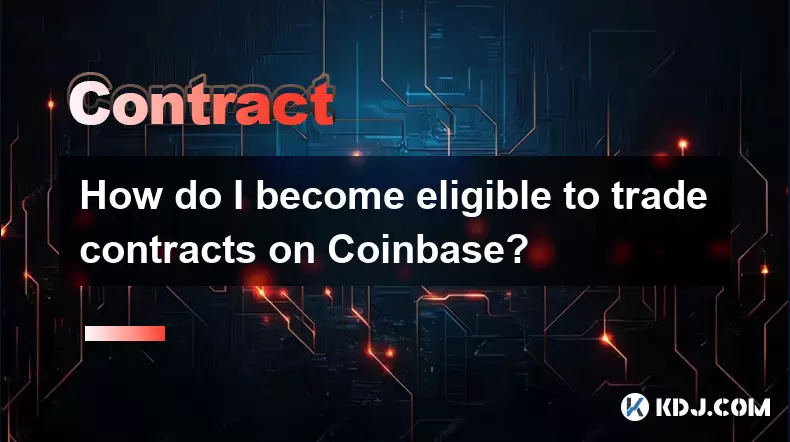
How do I become eligible to trade contracts on Coinbase?
Aug 08,2025 at 04:42am
Understanding Contract Trading on CoinbaseContract trading on Coinbase refers to the ability to trade derivative financial instruments such as futures...
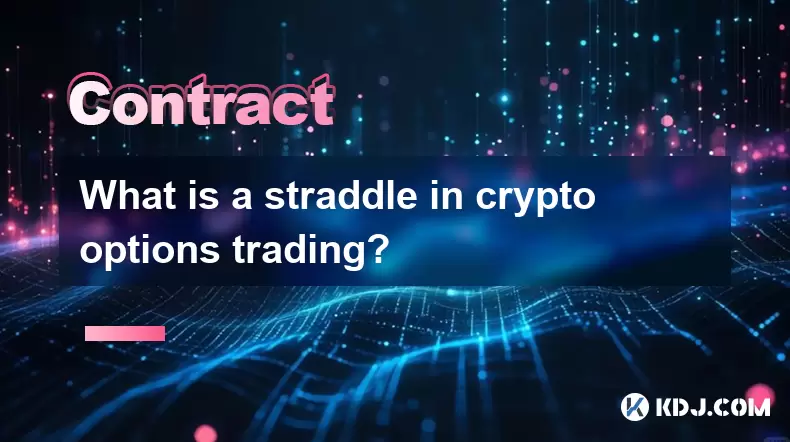
What is a straddle in crypto options trading?
Aug 07,2025 at 11:15pm
Understanding the Basics of a Straddle in Crypto OptionsA straddle is an options trading strategy used when a trader expects significant price movemen...
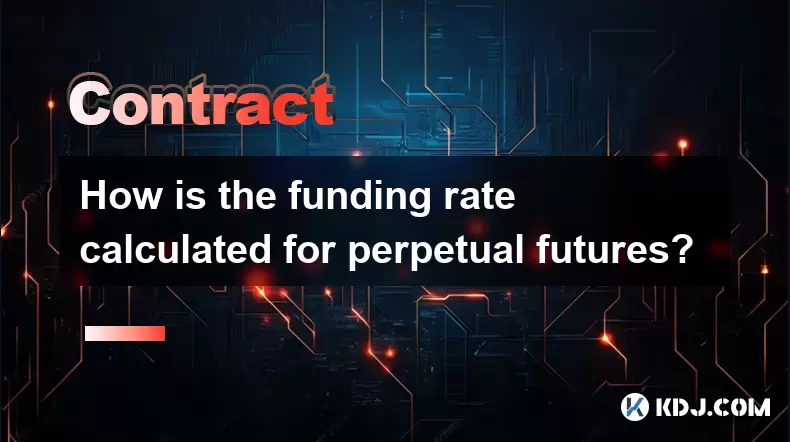
How is the funding rate calculated for perpetual futures?
Aug 07,2025 at 11:36pm
Understanding the Basics of Perpetual FuturesPerpetual futures are a type of derivative contract that does not have an expiration date, allowing trade...

What programming languages are used for smart contracts?
Aug 07,2025 at 06:07pm
Understanding Smart Contracts and Their Execution EnvironmentSmart contracts are self-executing programs deployed on blockchain networks that automati...

How do I use the Kraken Pro interface for contract trading?
Aug 08,2025 at 05:00am
Understanding the Kraken Pro Interface for Contract TradingThe Kraken Pro platform is designed for advanced traders who require speed, precision, and ...

What triggers a liquidation event on a Coinbase futures position?
Aug 08,2025 at 01:15am
Understanding Futures Contracts on CoinbaseFutures contracts on Coinbase allow traders to speculate on the future price of a cryptocurrency, such as B...

How do I become eligible to trade contracts on Coinbase?
Aug 08,2025 at 04:42am
Understanding Contract Trading on CoinbaseContract trading on Coinbase refers to the ability to trade derivative financial instruments such as futures...

What is a straddle in crypto options trading?
Aug 07,2025 at 11:15pm
Understanding the Basics of a Straddle in Crypto OptionsA straddle is an options trading strategy used when a trader expects significant price movemen...

How is the funding rate calculated for perpetual futures?
Aug 07,2025 at 11:36pm
Understanding the Basics of Perpetual FuturesPerpetual futures are a type of derivative contract that does not have an expiration date, allowing trade...

What programming languages are used for smart contracts?
Aug 07,2025 at 06:07pm
Understanding Smart Contracts and Their Execution EnvironmentSmart contracts are self-executing programs deployed on blockchain networks that automati...
See all articles

























































































